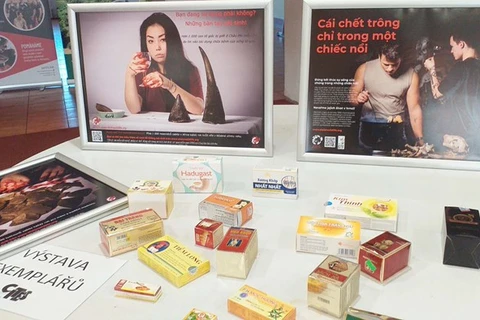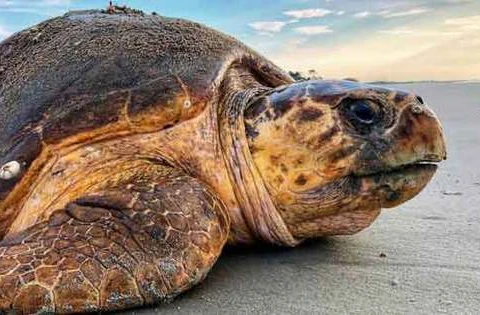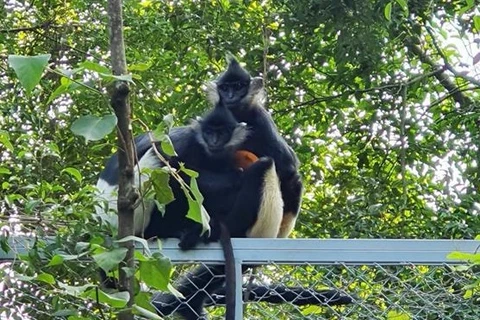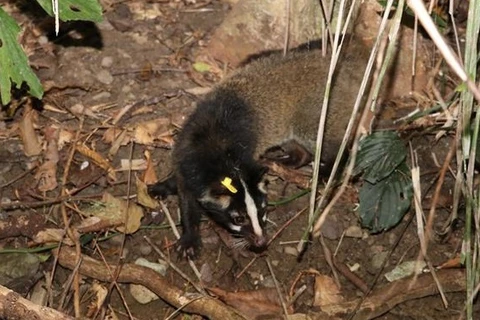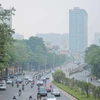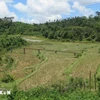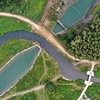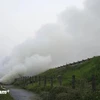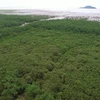Vietnam, though rich in biodiversity with a large number of precious, rare and endemic species, has seen a decline in the number of many rare species, requiring the country to work hard to preserve and protect them against risk of extinction.
 A coolie (Photo: VNA)
A coolie (Photo: VNA) Hanoi (VNA) – Vietnam, though rich in biodiversity with a large number of precious, rare and endemic species, has seen a decline in the number of many rare species, requiring the country to work hard to preserve and protect them against risk of extinction.
According to the Wildlife Conservation Society (WCS), in the period from 2013-2017, Vietnam recorded 1,504 wildlife rule violations involving 1,461 suspects. More than 180 wildlife species were illegally transported, caged, hunted and trafficked in the period.
A report by the International Environmental Investigation Agency showed that in the 2014-2019 period, Vietnam brought to light more than 600 wildlife trafficking cases, seizing 105 tonnes of ivory (meaning that more than 15,700 elephants were killed), along with 1.69 tonnes of rhino horn (equivalent to 610 individuals); skins, bones and other products of about 228 tigers; and the body and scales of about 65,510 pangolins.
Wild animals have been illegally trafficked not only inside Vietnam but also across the border, making the country a transit place for criminal rings in trafficking ivories, pangolin scales and rhino horns from Africa.
In the 2016-2021 period, more than 11,000 wild animals have been put for sale on the Internet, according to the WCS.
The results of a project to protect elephants in Vietnam in the 2013-2020 period showed that Vietnam had less than 120 elephants. Meanwhile, statistics from the IUCN revealed that in 2015, fewer than five tigers lived in the nature in Vietnam. The IUCN Red Book said that tigers may have been extinct in Vietnam. One of the reasons behind the situation is the illegal hunting and trafficking of the animal.
Regarding wild birds, 18 Vietnamese and international non-governmental organisations have discovered hotspots in bird trading such asThanh Hoa (Long An), Tam Nong (Dong Thap) or areas around the Xuan Thuy, Cat Ba and Tram Chim national parks.
The hunting, trading and consumption of wild birds have affected the prestige of Vietnam in the world arena as the country has joined the East Asian- Australasian Flyway Partnership (EAAFP) as well as many other international conventions and commitments on wildlife protection.
The Nature and Biodiversity Conservation Agency under the Ministry of Natural Resources and Environment’s Vietnam Environment Administration said that the World Wide Fund For Nature in Vietnam is strengthening communications to raise public awareness of tiger conservation in Vietnam.
Hoang Thi Thanh Nhan, Vice Director of the agency said that although traces of tigers are hardly found in the wild in Vietnam, the country can still contribute to efforts in tiger conservation in Southeast Asia through ongoing attempts such as protecting and restoring tiger habitats, ending non-conservational captivity, and reducing consumer demand for tiger products.
In the National Programme on Tiger Conservation for the 2014-2022 period, Vietnam has set the target of protecting and conserving tigers, tigers’ habitats and prey, contributing to preventing the decline in the number of tigers, gradually recovering, improving and increasing the number of wild tigers by 2022.
To this end, Vietnam has defined seven major groups of solutions, including the establishment of a priority area for tiger conservation and the building of corridors to preserve the habitat of tigers in the wild; developing a programme to monitor tiger populations and their prey in the wild; strengthening communication to raise public awareness in the field; and increasing cross-border cooperation in the work./.

